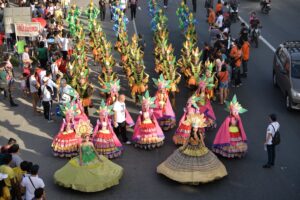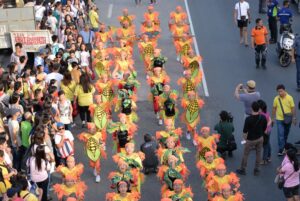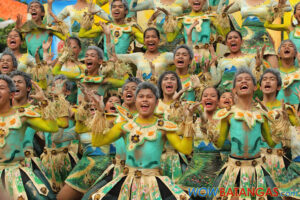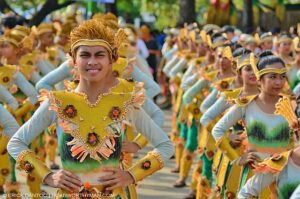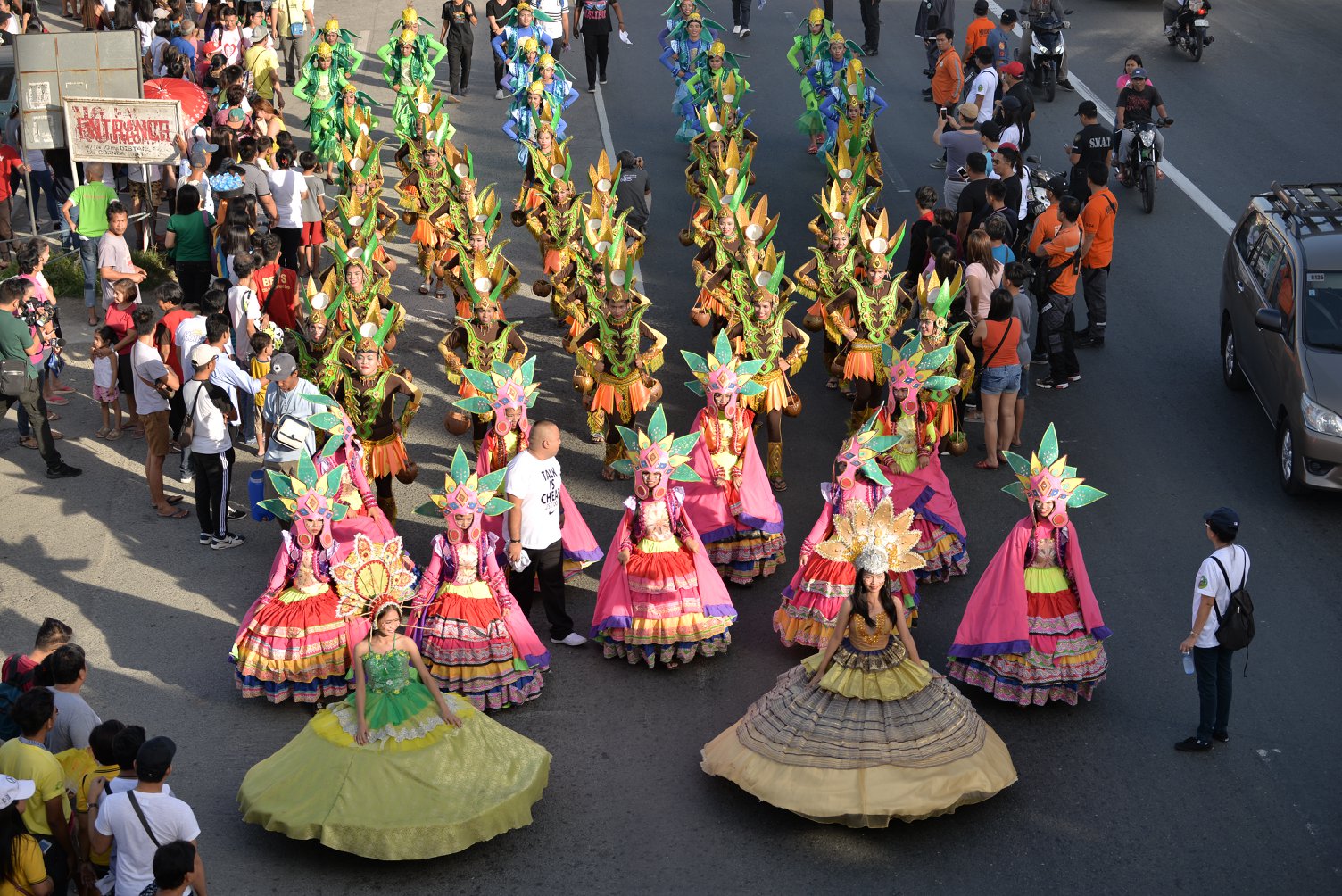
Historical Significance
The Mahaguyog Festival of Santo Tomas, Batangas stands as both a tribute to the town’s rich agricultural roots and a celebration of its enduring sense of unity. The festival’s name, “Mahaguyog,” is a creative fusion of Filipino words symbolizing the community’s lifeblood: mais (corn), halaman (plants), gulay (vegetables), and niyog (coconut) — all representing the town’s vital farm produce.
The roots of the celebration are closely tied to the history of Santo Tomas itself, one of the earliest established towns in Batangas, founded in 1666 during the Spanish colonial period. Originally a small settlement near the San Juan River, the town flourished through agriculture — its lands once abundant with rice, sugarcane, corn, and other crops that sustained both livelihood and tradition. Historical accounts describe Santo Tomas as a modest yet “advantageous” place to live, with fertile fields and a strong agricultural community.
The modern Mahaguyog Festival was officially launched in 2010 as a form of thanksgiving for bountiful harvests and as a showcase of the people’s talents and skills. Over time, it has evolved into a celebration of the city’s founding anniversary, intertwining the gratitude of farmers with civic pride and religious devotion. The inclusion of the festival in Philippine commemorative stamps in 2015 further underscores its national recognition — not only as a local festivity but as a symbol of agricultural and cultural identity.
Today, the Mahaguyog Festival mirrors the city’s progress, tracing a journey from its humble farmlands to becoming a thriving component city through Republic Act 11086, ratified in 2019. Yet amid modernization, the festival continues to honor its past, blending history with heartfelt gratitude for the soil that sustained generations.
Unique Traditions
Each year, as February draws to a close and the first days of March unfold, Santo Tomas bursts into color, music, and dance. The Mahaguyog Festival stretches for about a week — sometimes longer — filled with both solemn religious rites and exuberant cultural activities.
Religious devotion remains at its heart. The celebration coincides with the feast of Saint Thomas Aquinas, the city’s patron saint. The parish organizes a nine-day novena and masses beginning February 25, culminating on March 7. Within this spiritual observance, locals express their faith through prayer, processions, and gratitude for the blessings of the harvest season.
Parallel to the religious ceremonies are the lively public festivities. Streets come alive with parades, pageantry, and street dancing — a vivid display of community spirit where schools, organizations, and barangays take part in “Mardi-Gras”-style performances. The week also features beauty and personality pageants, talent shows, and food and trade fairs that highlight the city’s agricultural products and craftsmanship.
The festival’s schedule blends both tradition and innovation. Events like the “Youth Night,” “Seniors’ Night,” “Miss Gay Sto. Tomas,” and even contests for BMX and skateboarding reflect the inclusivity of the celebration — an acknowledgment that the Mahaguyog Festival belongs to every generation of Tomasinos. These activities, infused with music, dance, and laughter, sustain a sense of belonging and joy that connects both farmers and city dwellers under one shared identity.
Video from City of Sto. Tomas Batangas
Cultural Impact
Beyond its week of festivities, the Mahaguyog Festival holds deeper meaning for the people of Santo Tomas. It is not merely a commemoration of harvests past but a continuing expression of the city’s values: faith, unity, and gratitude. As a festival that bridges the agricultural and spiritual, it reminds Tomasinos of their intertwined relationship with the land and their patron saint.
The festival also reinforces local pride by showcasing the evolution of Santo Tomas — from a small, agrarian town to a prosperous, urbanized city. While progress has brought new industries and development, the Mahaguyog Festival preserves the essence of the community’s identity, serving as a living link to its agricultural heritage. The active involvement of schools, youth groups, and local businesses further strengthens this continuity, ensuring that even as the city modernizes, its roots remain firmly planted in the values of hard work and shared celebration.
The 2015 issuance of Philippine Postal Corporation stamps featuring the festival marked a significant cultural milestone. It not only celebrated Santo Tomas’ agricultural wealth but also honored its contributions to national history — including a nod to General Miguel Malvar, a native of the town and the last Filipino general to surrender to American forces.
Through its vibrant festivities and deep symbolism, the Mahaguyog Festival has become more than just an annual event — it is a story of a community that continues to grow without forgetting where it began. For the people of Santo Tomas, it’s a celebration that blends the past and present, a festival that honors the land, faith, and unity that define who they are.

